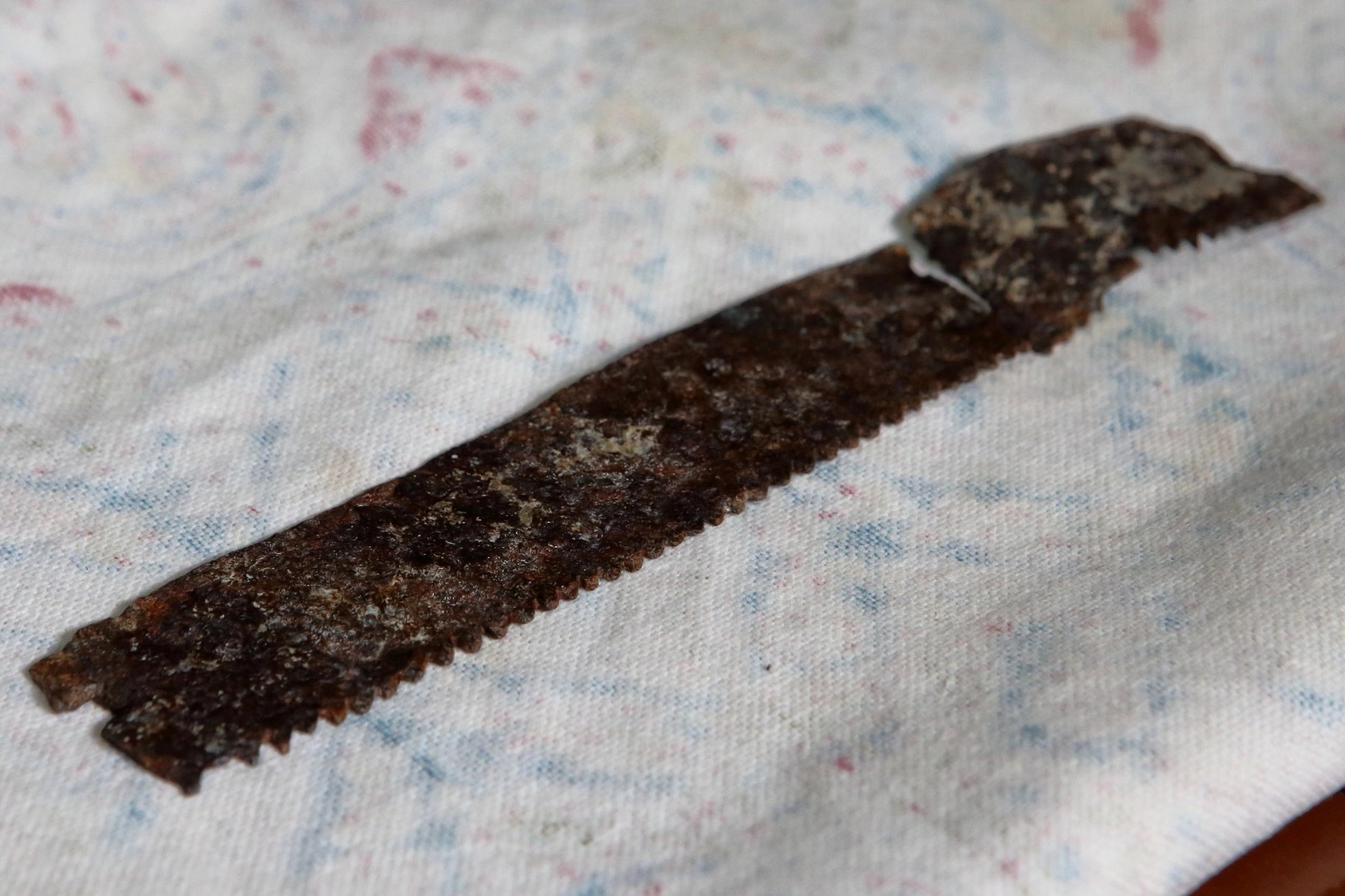The German Archaeological Institute’s excavation of the ancient Hittite capital of Hattusa has unearthed a rare iron saw dating to the 3rd century B.C. It is the first saw from this period discovered in Anatolia.
Professor Andreas Schachner, who leads the excavations, told Anadolu Agency (AA) that the iron of the saw was thicker than contemporary saws, but otherwise, it is very similar to the ones used today.
“This shows us that humans do not simply modify working tools,” he said.
Approximately eight inches long, the rectangular saw blade has teeth on one long edge that show extensive evidence of wear and tear. It was found on the northwestern slope of the large castle area in a building from the Galatian period. The building was in use around 2,250 years ago when central Anatolia was occupied by the descendants of the Celts who had invaded Greece in 278 B.C. There are few known examples of saws from this era; later Roman saws are more common.
Only the iron blade of the saw has survived. Mounting holes on both sides indicate it had a semicircular handle, likely made of a wood, that the carpenter would have gripped when moving the blade back and forth.
* This article was originally published here









No comments:
Post a Comment